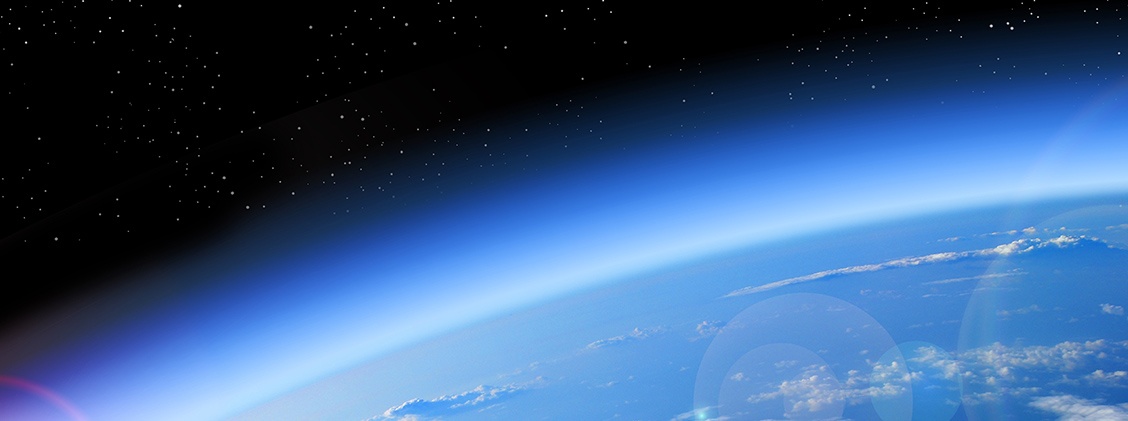Ozone is a naturally occurring gas found in the ozone layer of the Earth's atmosphere, which rests between 10 km and 50 km above the surface of the planet. It is produced by both the sun's ultraviolet (UV) rays, and lightning strikes on Earth. In the ozone layer, the sun's harmful UV rays are filtered out before reaching ground level. If ozone ceased to exist, life on this planet would also cease to exist.
Ozone (O3) is the same as oxygen (O2), but with one more oxygen molecule added in. In technical terms, ozone is known as a tri-atomic molecule comprised of three oxygen atoms, and is also described as "activated oxygen" or "super oxygen". It is an unstable blue gas, which means that in normal air conditions, ozone will cast off its third oxygen molecule, naturally converting into oxygen. Because of its unstable nature, ozone cannot be stored and transported like other industrial gases, and must therefore be produced on site.
Ozone has a smell that is easy to recognize, and in low levels makes the air smell fresh. Most people can smell the presence of ozone in concentrations of about 0.01 ppm. It is one of the strongest oxidizers known to exist (it works 3,125 times faster than chlorine), second only to fluorine. Because of its oxidizing properties, ozone does not simply cover up unpleasant smells, it safely and quickly destroys smells at the molecular level. Ozone has the ability to alter, decompose and/or neutralize materials that are toxic, without creating additional or by-product toxic compounds of its own.
-
How Does Ozone Eliminate Odors?
How does ozone shock treatment actually work to remove smells? Organic (living) substances like odors are composed of hydrocarbon molecules. Many times these organic odor substances are microscopic, invisible to the human eye.
Ozone is an unstable molecule that attacks hydrocarbon molecules, breaking them down into harmless substances like carbon dioxide, oxygen and trace amounts of water.
When ozone comes into contact with living organisms, like bacteria, viruses, fungi, yeast and protozoa, it disrupts the integrity of the cellular membrane by oxidizing of the phospholipids and lipoproteins. In plain English, as ozone makes contact with these living organisms, it creates tiny holes in the cell wall, injuring the organism, causing it to lose its shape. This reaction is called an "oxidative burst". As ozone molecules continue to collide into the cell wall (a thousand times in just a few seconds) the cell wall can no longer maintain its shape and the organism will die. The human body uses the same technique to attack and destroy bacteria and viruses.
Ozone attacks fungi, inhibiting its cell growth at certain stages. It also attacks viruses, damaging their reproductive cycle. Because of the impact ozone has on living organisms, it is important that people evacuate the areas being treated by ozone until the process has completed. Once the ozone is no longer being generated, the ozone will quickly convert into safe, breathable oxygen, leaving no residue.
-
Is Ozone Safe?
Yes, in the hands of a trained technician, ozone shock treatment is quite safe. Proper ozone treatment occurs in unoccupied spaces, with sufficient time given for the ozone to revert into safe, breathable oxygen. What's more, ozone leaves no residue, and creates no harmful byproducts or chemicals. Certain ozonating household products are discouraged by both us and Health Canada as dangerous because the units are intended by the manufacturers to be operated in occupied spaces.
Ozone generators are only safe for use in unoccupied spaces by trained individuals who are following appropriate occupational health and safety requirements. Used improperly, ozone can be very dangerous. People exposed to ozone at shock levels long enough can experience pulmonary edema (a buildup of fluid in the lung). We will wear respirators to shut down the ozone generators and begin the airing out of the dwelling.
We adhere to a strict policy called "The 3 P's." This means that our technicians ensure that all people, pets and delicate plants are removed from areas being treated. Following treatment, ozone treatment reverts to safe, breathable oxygen with a half-life of 30 minutes in regular atmospheric conditions. This means that when the ozone generator is turned on, each 30 minute period will see half as much ozone left at the end of the period that was present at the beginning of the period.
For approximately 24 hours following treatment, there will be a safe level of detectable ozone in the air that you will smell. If desired, a lemon spritz will re-odorize the area.
-
Is Ozone Eco-friendly?
Yes! Ozone treatment is all-natural, and very eco-friendly. Ozone is produced regularly by nature itself. Through the sun's ultraviolet rays, lightning strikes and even from water cascading off a water fall, nature uses ozone to purify the air we breathe. Unlike conventional air freshening techniques such as aerosol air fresheners, or environmentally harmful cleaning chemicals that may cause health risks, properly applied ozone poses no health issue at all. Since ozone is regularly produced in nature for the purpose of purifying air, it in no way hurts the environment.
Additionally, ozone created by our UV generators do not create any harmful bi-products or chemicals that pollute the air we breathe or harm the Earth itself. As part of its air purifying process, ozone safely converts into oxygen, the very gas we need to survive.
